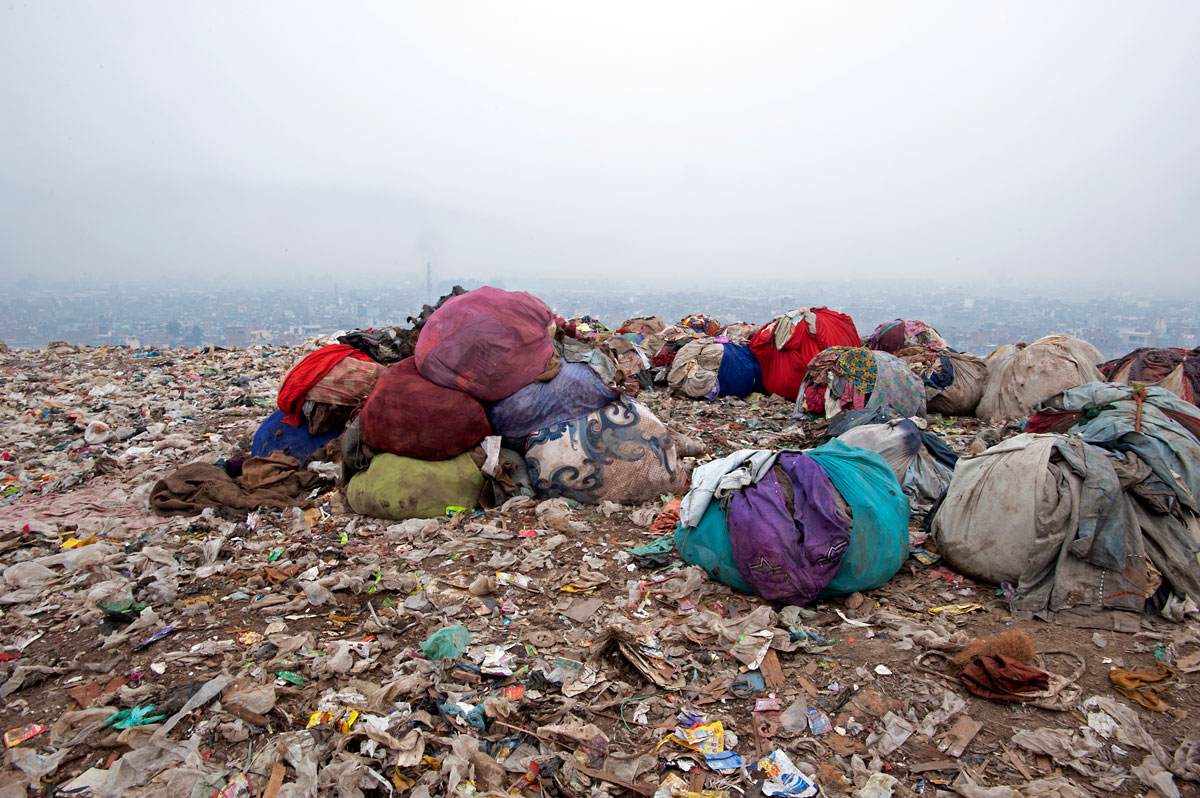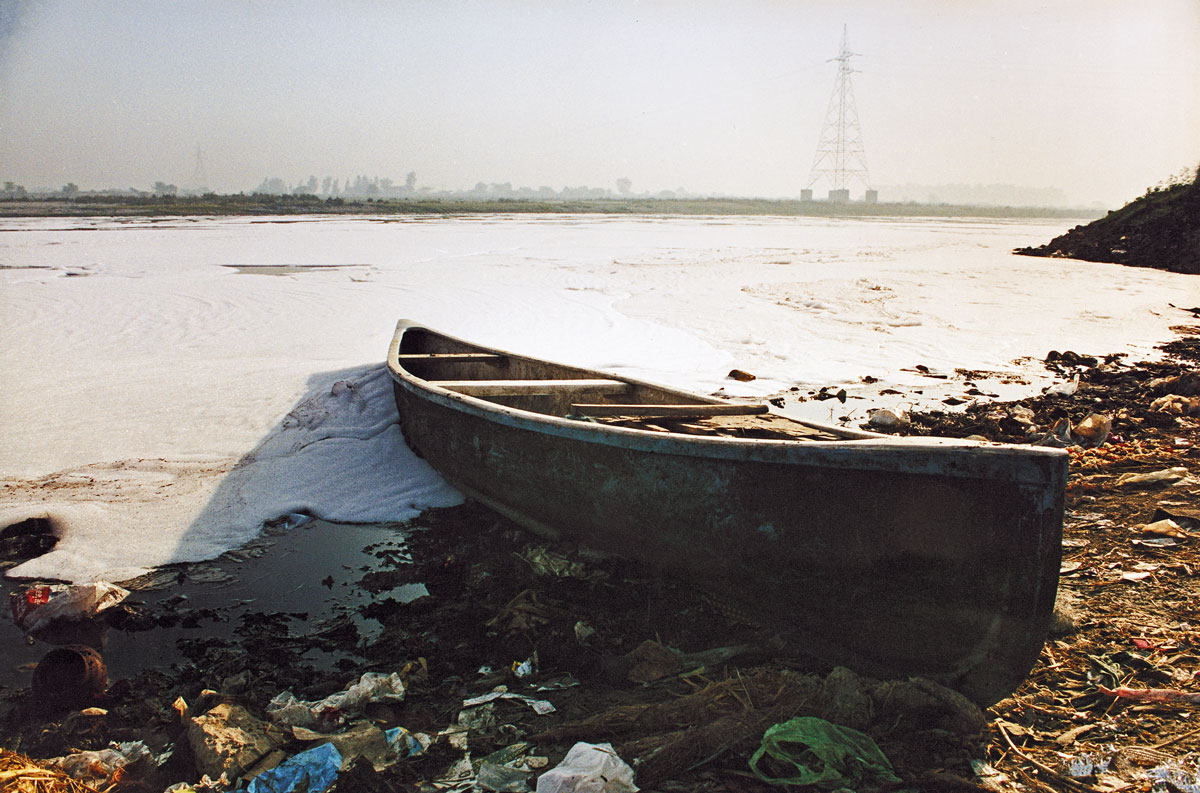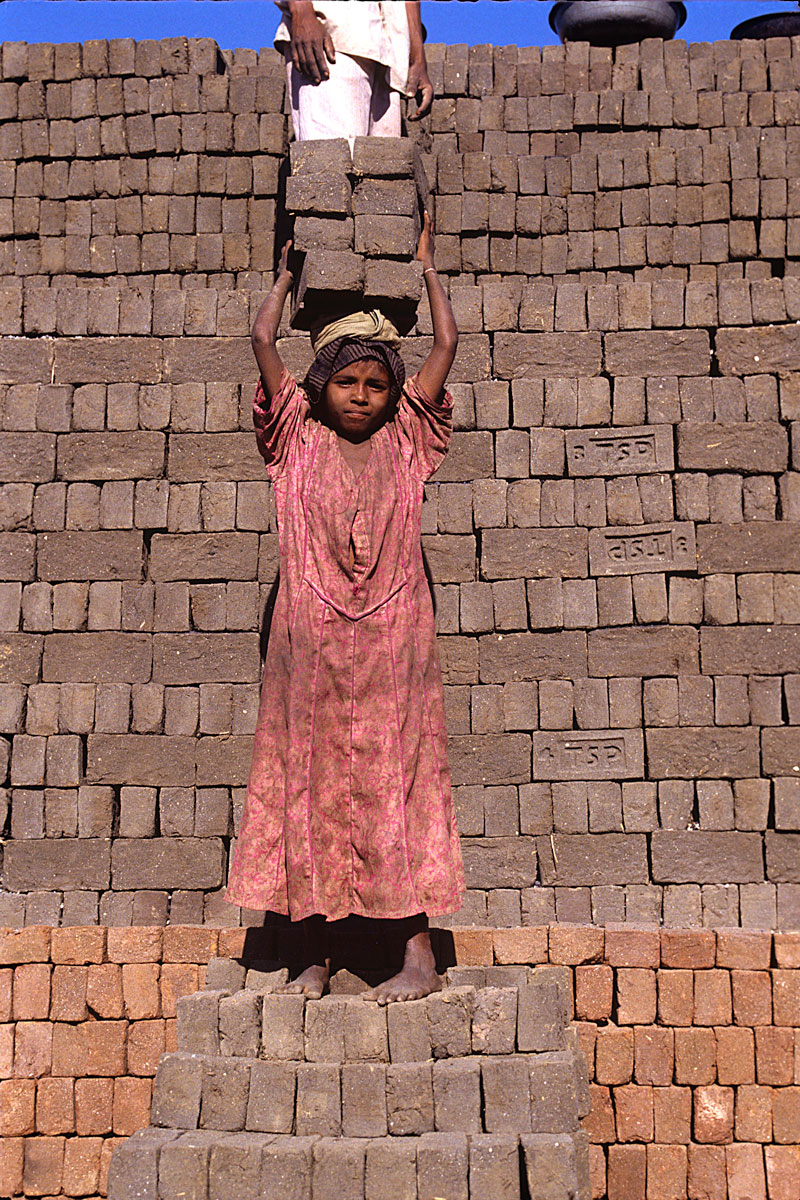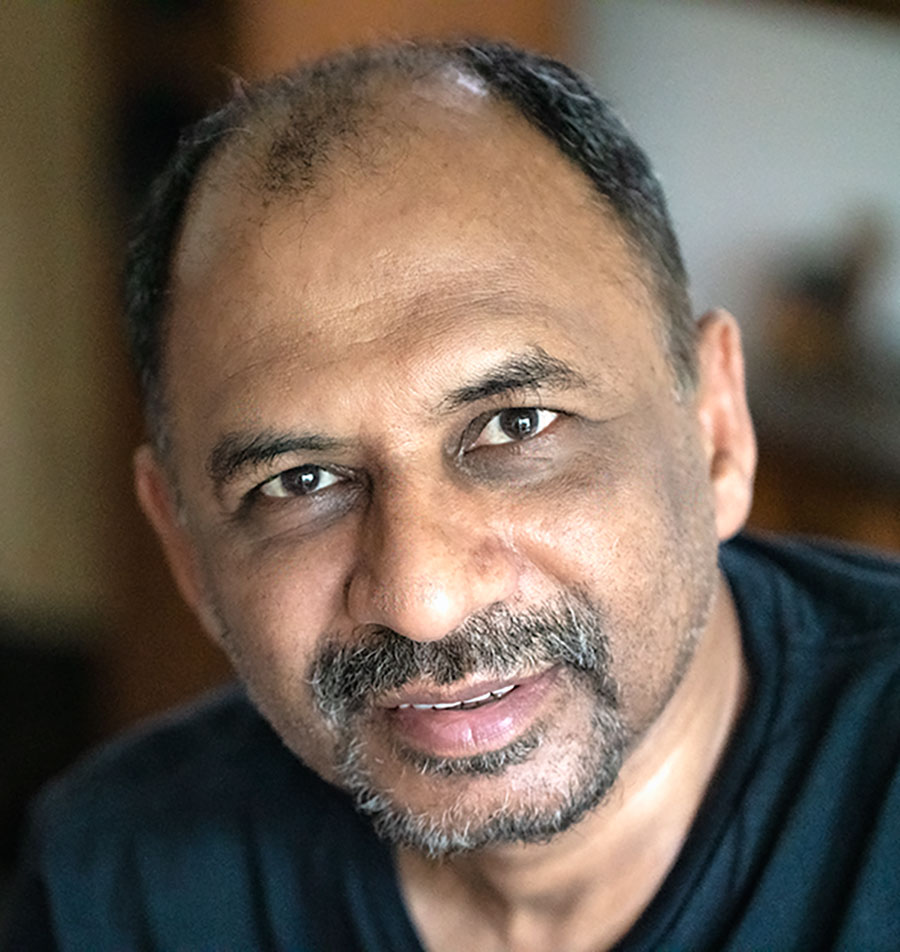
The artist-research group Forensic Architecture’s recent video Cloud Studies[1] examines manmade clouds. Spanning a global terrain, they mark the occupied Gaza Strip, where “tear gas (has been) used to disperse bodies gathering in democratic protest, (where) white phosphorus and chlorine gas are used to spread terror in cities, (or where) herbicide is sprayed from airplanes to destroy fields and displace those whose livelihood depends on them, (while) arson is used to eradicate forests for industrial plantations. Mobilized by state and corporate powers, toxic clouds colonize the air we breathe…”
The video describes clouds as “the epitome of transformations and their dynamics (as) elusive, governed by nonlinear and multi-causal logics. This is a problem that originated throughout the history of painting, when clouds were moving faster than the painter’s brush could capture them and sometimes needed to be conceived rather than described.” The film locates toxicity as a biological and political tool which reaches into the heart of the Anthropocene condition. It also exposes toxic fault lines in our cultural norms, understandings, and values.
These kinds of practices integrate multiple affective and evidentiary logics, and notate an expanded aesthetic field of artmaking, to grapple with the complexities and urgencies of the worlds we inhabit today. The group’s nomination for the art world’s prestigious Turner Prize (2018), is further testimony of a blurring of traditional boundaries of art, and non-art. ‘
The Covid virus pandemic does a similar exposé. Rapidly transforming from a singular contagion into a cloud, like an omnipresent Timothy Morton hyperobject, it has caused a lurking fear and anxiety which has become engrained and normalized in our daily lives. Horrific images of people dying, gasping for breath, thousands of poor migrant workers marching to their village homes, with small children, women, carrying suitcases, bundles of food, sometimes barefoot, sleeping on railway tracks at night; police brutalities on the streets or reports of overcrowded prisons being contaminated, dense slums unable to do social distancing, people being mass sprayed by unsafe chemicals, the elderly isolated at home, are everywhere. These systemic failures have created a surreal and spectacular visuality which has moved us little, as we schizophrenically try to escape into normalcy. However, this is illusionary, since the toxic condition encompassing both the bio-logical as well as bio-political spheres, has been present for a long time. For example, recent decades have seen the spraying of Agent Orange during the Vietnam war, or the dumping of U.S. toxic wastes abroad. In fact, such passive acceptance could be a reason why the ecological crisis is now upon us – our failure to act with the compassion and urgency needed.

Photograph © Ravi Agarwal
Can art and aesthetics spur change? Or what kind of aesthetic pursuits can prevent art from being complicit in the problem? As an artist and environmentalist, creative pursuits have been my way of negotiating a labyrinth of feelings and compelling realities. However, an artist has many paths to choose from. One could limit oneself to representing the moment through evocative forms or delve into the deeper underlying questions at stake. The resultant aesthetics reveal a political choice: it depends on the agency or compulsions one feels. Before one discusses what could be toxicity’s future aesthetics modes, it is important to outline an understanding of its conceptual contours.
Toxicity is a pervasive condition of our time, like a disease. It can be experienced as a loss of a sensation, of capabilities, of agency, or even of life. Technically, hygiene, diseases, and toxics are interrelated. However, the toxic condition is brought about not only by unleashing the locked poisons of nature, but also through our political systems of power and control. Crossing the path of a venomous snake can be deadly, as can be digging into the innards of bats to release hidden viruses. Equally deadly are industrial-capitalistic global forces which have violently extracted nature from its ecosystem entanglements, through oil spills and mining, leaving behind mounds of toxins and pollution. More insidiously, suppression of local cultures, languages, and ways of life have taken place through colonization and similar impulses. Perhaps its least visible expressions are discriminations owing to race, caste, gender and of the non-human world, which are deep-rooted, diminish human life, its opportunities and possibilities. The effects of the toxic condition appear not only through cancers, diseases, intergenerational genetic mutations, but also through destruction of lives, livelihoods, cultures, and the devastation of landscapes. The two domains are also intertwined. For example, exposures to the metal lead can reduce children’s IQs irrevocably by over ten percent, but the highest effects are amongst the poorest and most nutritionally compromised ones. Similarly, the current Covid pandemic’s origins may be owing to transgressions into nature, but its differential impacts on the vulnerable and dispossessed, also seen in vaccine inequities, follow social structural inequalities. In fact, toxicity is rooted in the same kind of power-based alienations which we exhibit towards our fellow beings as we do towards nature. The Anthropocene with its triggers of climate change, chemicalization of ecosystems etc., is an outcome of such separateness. No matter how one examines it, toxicity has come to be an ontological material and philosophic condition of our times – which is deeply embedded in contemporary questions of nature and cannot be examined only symptomatically.

Photograph © Ravi Agarwal
Acting in such complexity, and proposing ways forward, is an artist’s challenge, and possibly her/his responsibility as well. Tackling the toxic condition is not merely examining viruses or chemicals under a microscope, though that is part of it, but also resisting the structures of the multiheaded monster. New critical artistic strategies which embrace these entanglements are called for. Engaging in them could both be a healing as well as a political process, driven by compassion and resistance. A desire for a better world must lie at its core. Boundaries of art, activism, and science have to be broken down and new collaborations embarked upon. It is where artistic practice, from its material to metaphoric engagements can lead, and propose a new kind of aesthetics, which counters a polarizing spectacularity for a more nuanced and affective understanding of it.
There have been fine artistic works and practices in the classical mode, which examine structural underpinnings of toxicities. To name a few, Subodh Gupta’s early performance video, Pure (1999),[2] where he washes off cow dung from his body, is an assertion of shedding caste identities and questions notions of purity. Shweta Bhattad’s[3] many performances of un-layering and washing off menstrual blood from her body in a symbolic act or drawing attention to social issues shows an emergence from the body – politic trapped in gendered and caste stereotypes. The Swiss entomology illustrator and artist, Cornelia Hese-Honnegger,[4] has delved deep into the Chernobyl nuclear disaster (1986), for example. She collected, studied, and painted mutated and morphologically altered insects and bugs found in the nuclear fallout zones of the accident and other such sites. Over time she has collected over 16,000 bugs over 25 sites. Though not claiming to be scientific evidence for mutations per se, her work creates an impressive visual array of what radioactive toxicity could look like. Julia Christenson,[5] the American artist who I had occasion to interact with extensively, explores the idea of waste, obsolescence, and discards of capitalism. (Upgrade Available, 2021). Tracking abandoned malls in the U.S., she explores the idea of obsolescence and abandonment as an outcome of capitalistic production. She also tracked the transfer of electronic waste from across the world to India, as a form of toxics dumping and neo colonialism. Lucy Lippard,[6] in her book Undermining (2006), explores artistic practices which dive into the politics of extractive capitalism in New Mexico, as they reveal the bareness and desolation left behind by gravel quarrying. In India, the artist Navjot Altaf’s[7] long engagements with the indigenous communities of Bastar, Madhya Pradesh, not only co-create aesthetic yet functional forms of community structures, but also records in great detail the toxification of the landscape through iron ore mining which has broken the back of their relationships with nature, particularly in her film Soul, Breadth, Wind (2018), Sheba Chhacchi’s installation Bhogi/Rogi[8] (2011) was an attempt to create an interactive and immersive experience about the effects of transgenic foods on the body. Prajakta Potnis’s He woke up with seeds in his lungs (2020),[9] depicts constructed x-rays of human lungs contaminated with everyday metal objects and refers to capitalistic materials invading the human body. On the other hand, photographer Ishan Tankha’s[10] dedicated and committed depictions of big dam displacements, the recent Delhi riots, and Covid-forced migration of labor across India depict an unapologetically real and stark picture of the human condition and its communal and structural inequities.
More recently, other types of exhibitions and art initiatives have broken traditional molds. They dissolve disciplinary boundaries and re-examine the complex entanglements of the current ecological crisis. Contagion (2021),[11] held at the Bengaluru Science Gallery, delved into the interface of science and art, to create a dialogue between aesthetic practices and investigations into the nature of materials and their social manifestations. The nature-culture divide was being questioned. Another exhibition, titled Toxicity (2014),[12] “…reconstruct(ed) not only the current environmental situation, but also its socio-political contexts by looking into modes of contemporary cultural and technological production.” The Polyeco Contemporary Art Initiative (PCAI),[13] based in Athens announced a residency (2018), with one of its objectives being to explore the manner in which the topic of hazardous waste concerns our everyday life, as part of a larger environmental question. It encouraged a multi-disciplinary approach. These exhibitions present conversational propositions for an aesthetics of reimagining toxicities. It is where new art practices which engage with this Anthropocene moment could be heading.
Such transdisciplinary approaches for toxicity and nature, are increasingly prevalent both in the arts as well as the academia and are producing another type of aesthetics. They represent a shift from classic gallery driven art practices to those where artists are being redefined. They can be activists, scientists, gardeners, landscape restorers, community builders, knowledge collaborators etc. At the core is the question of thinking of relationships with nature as bio- cultural-political ones and which contest the idea of human agency as supreme. The emerging aesthetics are a bridge between affective ways of being (which the artist offers) and the more normative structures of society.
Both aesthetic strategies as well as definitions of the artist need to expand to include newer forms of practices to address questions confronting the toxic condition. The complexity needs to be embraced. To mention a few; the artist Shweta Bhattad and her group’s work with farming communities in Nagpur delves into women’s and farmers’ rights. Arunkumar HG’s Sara community initiative[14] in his hometown farmland in the Western Ghats is promoting more sustainable agriculture. My own project with Southern fishers in India – Else all will be still,[15] was a collaboration between climate activists, environmental experts, Tamil poets, and the community itself.
Forensic Architecture[16] blurs the boundaries between artistic practice, visual design, and real-world investigations. On another end of the scale, the cultural critic T.J Demos has extensively explored the idea of the eco-political condition as part of an emerging aesthetic oeuvre. He states, “… the aesthetics of political ecology,…brings about a blurring of the divisions between activist visual culture, artistic forms and the appearance of non-human agents of environmental change”[17] The list is diverse and growing, as art attempts to include more than an object oriented aesthetic to intervene in the world.

Photograph © Ravi Agarwal
Finally, in general, art and aesthetics do inherently possess the capability to deal with the chaos and make a difference. Felix Guattari and Gilles Deleuze put it succinctly. “Art is not chaos, but a composition of chaos that yields the vision or sensation, so that it constitutes a chaosmos, a composed chaos – neither fore-seen nor preconceived.”[18] Aesthetic upheavals can catalyze less toxic futures and make art more encompassing and indeed lead the world out of its turmoil.
_______
[1] The group works with “institutions across civil society, from grassroots activists, to legal teams, to international NGOs and media organisations, to carry out investigations with and on behalf of communities and individuals affected by conflict, police brutality, border regimes and environmental violence”. It was nominated for the Turner Prize, 2018. See https://forensic-architecture.org/investigation/cloudstudies
[2] https://www.ft.com/content/3d6279b6-93d0-11e3-a0e1-00144feab7de
[3] https://indianexpress.com/article/cities/delhi/that-stinking-feeling/
[4] https://www.smithsonianmag.com/arts-culture/chernobyls-bugs-art-and-science-life-after-nuclear-fallout-180951231/
[5] https://www.juliachristensen.com/
[6] https://journals.openedition.org/transatlantica/8425
[7] https://www.navjotaltaf.com/
[8] https://khojworkshop.org/programme/bhogirogi-ii-consumptiondisease/
[9] http://www.project88.in/exhibitions-details/10051013
[10] https://www.ishantankha.com/index/G0000_gt2I5clEVw/thumbs
[11] https://bengaluru.sciencegallery.com/contagion
[12] https://www.artlink.com.au/articles/4216/toxicity-an-exhibition-curated-by-melentie-pandilo/
[13] https://www.pcai.gr/news/pcai-residency-2019-open-call/
[15] https://www.raviagarwal.com/wp-content/uploads/2018/09/Guild-Else-all-will-be-still.pdf
[16] https://forensic-architecture.org/
[17] Several. For example, TJ Demos (2013) Contemporary Art and the Politics of Ecology, Third Text, 27:1, 1-9, DOI: 10.1080/09528822.2013.753187
[18] Gilles Deleuze and Felix Guattari, What is Philosophy?, Hugh Tomlinson and Graham Burchell, trans. Columbia University, New York, 1994, p 204
Copyright © 2021, PhotoSouthAsia. All Rights Reserved.
Ravi Agarwal was invited to write this essay for PhotoSouthAsia by our Guest Editor, Gayatri Sinha. We encourage you to begin with Sinha's introduction, The Aesthetics of Toxicity, and to also read Sinha's other invited essayists:
Amrita Chakravarty: Covid-19 Between the Visible and Invisible
Rustom Bharucha: Beyond Photography
 Photograph © Ravi Agarwal
Photograph © Ravi Agarwal
Ravi Agarwal's practice has an inter-disciplinary character from his engagements as an artist, environmental campaigner, writer, and curator. Bridging the divide between art and activism, it politicizes the entangled questions of nature and its futures. He uses photography, video, text, and installation to pose questions about ecology and society, culture, urbanity etc. He has been shown widely, including at Documenta XI, the Biennials of Havana (2019), Yinchuan (2018), Kochi (2016), Sharjah (2013) etc. He has also curated large public art projects such as the Yamuna-Elbe, twin city project (2011), and Embrace our Rivers, an Indo-European project (2018), and was the photography curator for the Serendipity Arts Festival 2018 and 2019. Agarwal's works are in several private and public collections, and he has authored and edited several books and journals. He is also founder / director of the environmental NGO, Toxics Link, and recipient of the UN Award for Chemical Safety and the Ashoka Fellowship. (www.raviagarwal.com)
20 November